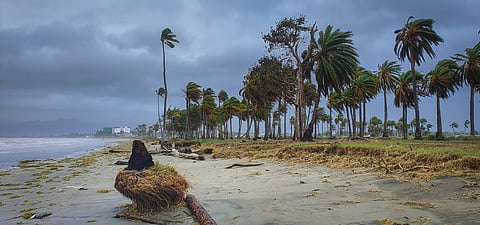

The year 2024 was the hottest-ever recorded in the South-West Pacific region, marked by extreme heat, devastating cyclones, heavy floods, and the largest marine heatwave event ever observed, according to the State of the Climate in the South-West Pacific 2024 report released by the World Meteorological Organization (WMO) on June 5, 2025.
The South-West Pacific region includes Australia, Brunei Darussalam, the Cook Islands, Fiji, French Polynesia, Indonesia, Kiribati, Malaysia, the Marshall Islands, Federated States of Micronesia, New Caledonia, New Zealand, Niue, Papua New Guinea, the Philippines, Samoa, Singapore, the Solomon Islands, Timor-Leste, Tonga, Tuvalu and Vanuatu.
The annual average surface temperature across land and ocean in the region surpassed all previous records, even exceeding 2023. This intense warming was largely driven by the 2023/2024 El Nino event, which, had a lingering warming effect across much of the region even after it ended.
From Malaysia and the Philippines to Vanuatu and southern Australia, temperatures were 0.5°C to 1°C higher than the 1991-2020 average. Brunei Darussalam, Singapore and the Philippines reported their hottest year ever.
The report flagged an unprecedented heatwave in Western Australia in February 2024. Carnarvon recorded a scorching 49.9°C, and Geraldton reached 49.3°C—both more than 2°C hotter than their previous century-old records. At Emu Creek, temperatures hit 48°C for four consecutive days—a first for any Australian location. This contributed to the hottest summer ever recorded in many parts of the region.
The climate extremes were not limited to temperature. The region experienced both severe droughts and record rainfall—clear signs of growing climate instability. The El Nino event contributed to unusually dry conditions in southern Australia, northern New Zealand, and Pacific islands such as New Caledonia, the Cook Islands, the Marshall Islands, and Hawaii—some of the driest in 30 years.
In contrast, parts of Malaysia, Indonesia, the northern Philippines, northern Australia, eastern Papua New Guinea, the Solomon Islands, and southern New Zealand experienced among the wettest conditions in three decades.
The late cyclone season in the Philippines (September to November 2024) was exceptionally active, with 12 named storms—double the normal average of 5 to 6. Notable cyclones included Trami, Kong-rey, Toraji, Usagi, and Man-yi. The storms caused widespread damage, with losses estimated at over $430 million, raising fresh concerns about changing storm patterns in the region.
Ocean temperatures also soared to record highs. The average sea surface temperature (SST) for 2024 was the highest since records began in the early 1980s. Ocean heat content approached record levels, matching 2021 and 2023 as the second-highest ever, just behind 2022.
Marine heatwaves (MHWs) reached unprecedented scale and intensity. Nearly 40 million square kilometres of ocean—more than 10 per cent of the global ocean surface—were affected by strong to extreme marine heatwaves. This is the largest extent ever recorded, surpassing previous highs seen in 2023 and 2016. The area covered was roughly equal to the size of Asia, or four times the size of Europe or the United States.
Marine heatwaves are prolonged periods of extreme heat that affect the ocean and have a range of consequences for marine life and communities.
The rising temperature also accelerated ice melt. In western New Guinea and Indonesia, glaciers shrank by 30-50 per cent between April 2022 and August 2024. If the current rate continues, the region could lose all remaining tropical glaciers by 2026 or shortly after.
As oceans warm, sea levels continue to rise—not only due to thermal expansion, but also because of melting glaciers and ice sheets. According to the WMO report, sea-level rise in the South-West Pacific has been faster than the global average of 3.5 mm per year over the past 30 years (1993-2024). This puts coastal areas and low-lying island nations at growing risk, threatening homes, livelihoods, and ecosystems.
The report highlighted rising sea levels since 2000 in Fiji’s Serua Province, where coastal erosion and flooding have severely impacted communities—damaging homes, breaching seawalls, submerging parts of the village, destroying food crops, and washing away fertile soil.
“Sea-level rise is an existential threat to entire island nations. It is increasingly evident that we are fast running out of time to turn the tide,” said Celeste Saulo, WMO secretary general in the report
The WMO report called for urgent action to strengthen climate resilience—particularly through improved early warning systems and community-based preparedness and featured success stories too. This included a case study from the Philippines, where anticipatory action and strong local engagement have helped save lives and safeguard cultural heritage.
The first WMO report on the State of the Climate in South-West Pacific was published in 2020. Since then, each edition of the report has presented the vulnerability of the region to climate-led extremes.